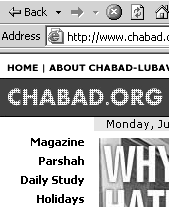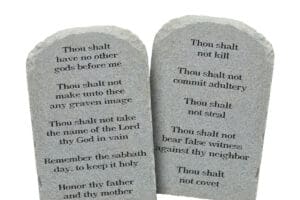Jewish Law & Customs
A popular Jewish folktale tells of a young student who came to a prominent rabbi to be tested for ordination. The rabbi’s first question was “Name the five volumes of the Shulkhan Arukh.”
The student, thinking that the rabbi had made a slip of the tongue, named the four volumes, but the rabbi asked him to name the fifth.
“There is no fifth volume,” the student said.
“There is indeed,” the rabbi said. “Common sense is the fifth volume, and if you don’t have it, all your rulings will be of no use, even if you know the other four volumes by heart.”
Links & Resources
- mishna run.org Learn Talmud through video’s Hebrew – English subtitle using the “ADMT” method
- /tosfos.com/
- dafyomi.co.il/
- shema yisrael.com
- come-and-hear.com/
- come-and-hear.com/kethuboth/
- come-and-hear.com/
- Audio
mp3shiur.com - www.sacred-texts.com/jud/talmud.htm
- Resolving Uncertainty: A Unified Overview of Rabbinic Methods
- bible.ort.org/
- Explanation of Atonement – Yom Kippur
- Chabad.org

- Rabbi Zalman Gordon Torah Cafe Video Facebook * Spotify *
- .Aish.com
- Jew Faq.org
- Union for Reform Judaism – Weekly Parsha
- Yiddish dictionary online.com
- Jewish virtual library.org/ shulkhan_arukh
- haEzer-laws concerning Jewish marriage and divorce.
Guaranteed Issue - No Pre X Clause
Quote & Subsidy Calculation
No charge for our complementary services
Watch our 10 minute VIDEO
that explains everything about getting a quote
#Mikveh – Jewish Ritual Bath
Learn more about Mikvah, by reading the links below.
Chabad.org on Mikvah
Los Angeles Mikvah – FAQ 9548 W. Pico Blvd, Los Angeles, CA
Beth Meyer Synagogue FAQ
Child Pages
[child-pages]



https://www.jccmb.com/library/article_cdo/aid/946703/jewish/What-Happened-on-the-Ninth-of-Av.htm
Thanks ffor finally talking about > Jewish Laaw Reference &
Research Aids & Mikveh Ritual Baath < Liked it!
How big was the plot of land that Abraham bought to bury his wife Sarah at Cave of the Patriarchs?
https://en.wikipedia.org/wiki/Cave_of_the_Patriarchs
The Torah recounts the Ephron-Abraham sale in great detail, including the sum of the purchase price—four hundred silver shekels. Based on this figure, the thirteenth-century sage Rabbi Yitzchak bar Yehudah (author of Paaneach Raza) makes an interesting calculation. According to Leviticus 27:16, the value of land in biblical times was 50 silver shekels for a beit kor, or 75,000 square amot (cubits). Thus, the area purchased by Abraham was eight beit kor, or 600,000 square cubits. A square cubit is the approximate area occupied by an upright human being. Chabad.org *
About 20,000 square cubits in an acre Convert Units.com * So, about 30 acres.
It’s the cave of Machpelah at the end of the field Genesis 23:9 https://biblia.com/bible/nrsv/genesis/23/9
https://biblia.com/bible/nrsv/genesis/23/17-20
17 So the field of Ephron in Machpelah, which was to the east of Mamre, the field with the cave that was in it and all the trees that were in the field, throughout its whole area, passed
18 to Abraham as a possession in the presence of the Hittites, in the presence of all who went in at the gate of his city.
19 After this, Abraham buried Sarah his wife in the cave of the field of Machpelah facing Mamre (that is, Hebron) in the land of Canaan.
20 The field and the cave that is in it passed from the Hittites into Abraham’s possession as a burying place
the Cave of Machpelah, the trees, and the fields that surround the cave are all deeded to Abraham. cfoic.com *
the first plot of land in the Holy Land to become the legal possession of the Jewish people. This took place in 1677 BCE. Chabad *
The space containing the traditional tombs is a great quadrangle 197 ft. in length (Northwest to Southeast) and 111 ft. in breadth (Northeast to Southwest). Bible Atlas.org *
Why are stones put on Jewish graves?
Sorry, the link I had to Beneath the Helmet broke. They gave a reason in the movie, I forgot. Here’s Wikipedia’s link
Official Trailer
Today, people still place stones on graves for religious reasons. The Talmud, or code of Jewish religious law, says a person’s soul dwells in the grave where they’re buried. Because of this, visitors will place stones on graves to keep the departed “where they belong.” Read 4 more reasons
Milano Monuments.com
My Grandparents passed away.
Am I permitted to wear their clothing?
Shoes?
The Sefer Chassidim – (A halachic work, written in the 12th century by one of the great Baalei Tosafos (Talmudic commentators), Rabeinu Yehudah HaChasid.) says that one shouldn’t wear the shoes of one who has passed away.
Since dreams are largely a result of one’s thoughts while awake, the fear is that wearing a deceased’s shoes will cause the person to think about it by day—perhaps causing this “bad omen” dream.
Please read the full article for more details.
There is no restriction against wearing other clothing of the deceased. Koreis Habris 51, brought in Nitei Gavriel 132 footnote 6 shulchan aruch harav.com
Jews are allowed to wear the clothing of a deceased person, but there has arisen a widespread custom – based on the writings of Rabbi Yehuda Hachasid – to avoid wearing his shoes. ohr.edu
yeshiva.co